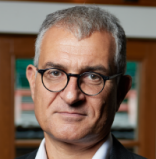European investors continued to send new money to mutual funds in November, adding a healthy EUR 27.6 billion to long-term funds. This brings total net inflows into open-end funds (excluding money market funds) to EUR 174.6 billion for the year to date.

Among the most notable trends in November was the popularity of equity funds. Net inflows of EUR 4.7 billion made November 2012 the strongest month for equity funds in Europe since April 2011.
Equity Funds Are Seeing Increasing Inflows in the Fourth Quarter
All in all, the picture for equity funds for this year still remains bleak, although skies are turning from black to greyish as the fourth quarter progresses. With equity funds still having lost EUR 11 billion of net investment for the year to date, it seems unlikely that December will see flows strong enough to pull them out of the red. However, the outflows are nowhere near the panic sell-offs seen in 2011 and 2008 when equity funds were hit with outflows of EUR 41.8 billion and EUR 84.9 billion, respectively.
Drilling deeper into the equity fund realm, the ramifications of the eurozone crisis become apparent.
While global emerging-markets funds, Asia-Pacific ex-Japan, and global large-cap value funds saw handsome inflows, Germany and UK equity funds were among the most unloved categories. This trend has been persistent throughout most of the eurozone crisis with investors fleeing low-growth Europe and seeking refuge in emerging markets, which are expected to deliver higher returns going forward. Ironically, eurozone equities have outperformed emerging-markets equities by wide margins for the year to date through November with funds in the Morningstar’s eurozone large-cap equity category gaining 16.6% and emerging-markets equity rising only 11.7% on average.

But the Bond Boom Continues
The big picture, however, remained unchanged in November, with bond funds seeing EUR 19.9 billion in inflows, a similar volume as the previous four months. This made November 2012 the second best for bond funds on record. (Morningstar’s European asset flow data extends back to 2007.) As the year draws to a close, it looks as if 2012 will go down as the year of the bond fund. For the year to date, investors have poured a breath-taking EUR 158 billion into bond funds, comfortably outpacing 2010’s tally of EUR 96.53 billion in inflows.
Bond Funds vs. Equity Funds: The Times They Are A-Changin’
The distribution of asset growth across European open-end funds in the past five years highlights the shift in European investor preferences. While assets under management in bond funds have nearly doubled since December 2007, rising from EUR 866 billion to EUR 1,519 billion, assets in equity funds have practically stagnated with volumes rising by only EUR 18 billion to EUR 1,659 billion over the period.

It appears likely that the bond glut will continue for some time. Fund buyers are displaying a huge appetite for yield, piling into global emerging-markets bonds and myriad high-yield bond categories.
With interest rates in many developed countries nearing all-time lows and high-quality bonds delivering miserly returns, investors in Europe are desperately seeking income with higher-yielding bonds as their last refuge.

Conversely, EUR ultra-short-term bond funds was the most unloved category for the year to date, posting outflows of EUR 10 billion, followed by GBP government bond, EUR diversified, and EUR government short-term bond funds.
Meanwhile, Morningstar credit analysts do not expect an Armageddon-like scenario to materialise next year. “While the corporate-bond market has made extraordinary gains this year, it does not appear to be in a bubble. Corporate credit spreads are back to the tightest levels since early 2011 but have not tightened to the historically tightest levels reached in 2007,” says Morningstar bond strategist David Sekera. However, investors buying into credit risk blindly might be in for a nasty surprise if sovereign interest rates begin to rise.
“A correction could be triggered by a deeper and longer-than-expected recession within the eurozone, a re-emergence of the European sovereign crises, a hard landing in China, and a failure of the U.S. government to resolve the `fiscal cliff,´ “adds Sekera.
Delegate My Investment, Please! Allocation Funds Continue to Gather Assets
Allocation funds also continued their winning streak, posting net inflows of EUR 3.1 billion in November and EUR 25 billion for the year to date, making mixed-asset funds the second most popular of Morningstar’s broad asset classes. This highlights the continuing trend of investors delegating asset allocation responsibility to their fund manager. For the year to date, big-name flagships like M&G Optimal Income Fund, Carmignac Patrimoine, Newton Real Return, and Baring Dynamic Asset Allocation have dominated flows.
There were notable exceptions to the big-is beautiful trend, however. Several smaller allocation funds employing special management techniques (Invesco Balanced-Risk Fund), exploring new asset mixes (Carmignac Portfolio Emerging Patrimoine), or simply displaying good allocation skills (FvS Strategie Multiple Opportunities) have also enjoyed high inflows this year.

Turning to fund providers, the data reveals a predictable picture: Bond specialist PIMCO features most prominently in the top rankings, posting inflows of EUR 29 billion, over two times more than runner-up Alliance Bernstein.
Only two of the 10 fund providers with the highest inflows for the year to date deviated from the bond trend: Aberdeen was the main beneficiary of the high inflows into emerging-markets equity funds, and M&G benefited from the drive to allocation funds.
As investors will, arguably, continue to focus on fixed-income investments in 2013, the beneficiaries of 2012 are likely to continue to feature prominently in fund sales rankings going forward.





























